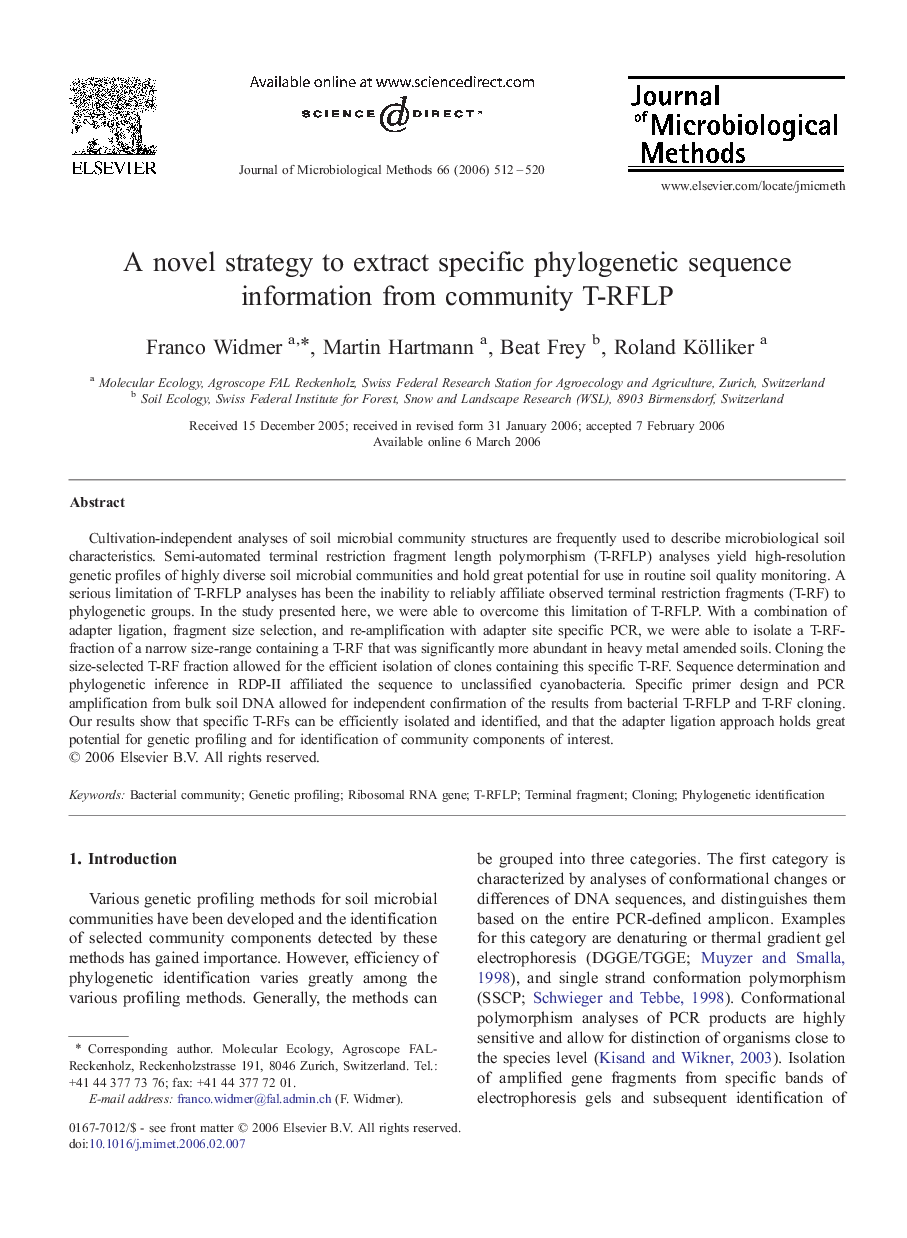| Article ID | Journal | Published Year | Pages | File Type |
|---|---|---|---|---|
| 2091265 | Journal of Microbiological Methods | 2006 | 9 Pages |
Cultivation-independent analyses of soil microbial community structures are frequently used to describe microbiological soil characteristics. Semi-automated terminal restriction fragment length polymorphism (T-RFLP) analyses yield high-resolution genetic profiles of highly diverse soil microbial communities and hold great potential for use in routine soil quality monitoring. A serious limitation of T-RFLP analyses has been the inability to reliably affiliate observed terminal restriction fragments (T-RF) to phylogenetic groups. In the study presented here, we were able to overcome this limitation of T-RFLP. With a combination of adapter ligation, fragment size selection, and re-amplification with adapter site specific PCR, we were able to isolate a T-RF-fraction of a narrow size-range containing a T-RF that was significantly more abundant in heavy metal amended soils. Cloning the size-selected T-RF fraction allowed for the efficient isolation of clones containing this specific T-RF. Sequence determination and phylogenetic inference in RDP-II affiliated the sequence to unclassified cyanobacteria. Specific primer design and PCR amplification from bulk soil DNA allowed for independent confirmation of the results from bacterial T-RFLP and T-RF cloning. Our results show that specific T-RFs can be efficiently isolated and identified, and that the adapter ligation approach holds great potential for genetic profiling and for identification of community components of interest.
